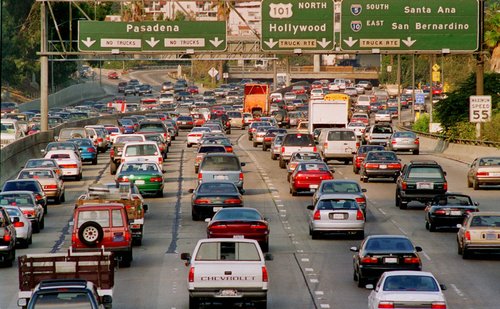It had been argued that the lack of an institution in charge of non-private
vehicle transportation in Bogotá triggered severe traffic congestions. Through several
attempts of strengthening the organization which would be in charge of the
transportation system, the Urban Development Institute (IDU), took responsibility
to build and maintain the infrastructure, and the Department of Transportation was
put in charge of operating the system.
In order to build a people-oriented transportation system, Bogotá designed
several policies of suppressing the use of a private car such as the Pico y
Placa program (peak and license plate), the car-free day, and the public space
policy. The Pico y Placa program is the
odd-even license plate restriction where 40% of vehicles are not allowed to
drive during morning peak and evening peak-hours. The car-free day is another
trial of encouraging the people of Bogotá to use modes of transportation
outside of private-vehicle use.
The city administration
led by Mayor Enrique Peñalosa came up with several goals in regards to
re-purposing some of the public space in the city. Those goals were freeing up
500 km of sidewalk parked cars, build 932,000 m² of pedestrian public space, rehabilitate 195,000 m2 of
existing pedestrian public space, and rehabilitate 648 parks. In order to
achieve these objectives, the city ended up implementing parking restrictions
in some places where free parking used to be available.
The TransMilenio BRT (bus rapid transit) system, created in 1999, was
considered one of the most innovative public transportation implementations in
the world. At the time, the public transportation options were dangerous, highly
competitive, inefficient and included multiple owners of different areas of the
program with no checks and balances in place. The nature of the competition
also resulted in extreme oversupply of old, rickety buses, which posed numerous
problems for the city. With the implementation of the TransMilenio, the city
built large-capacity fuel-efficient buses and bus-ways and developed a better
department for overseeing the public transportation issues of the entire city.
Mayor Peñalosa also spearheaded the 350 km bikeway construction in the
city. This plan was met with great opposition from several different
organizations and interest groups. However, after it was determined that car
use was decreasing and there was a possibility that bicycle use was increasing,
the city went ahead with the bikeway project.
During the Peñalosa administration, the state of the roads in Bogotá
was a major issue on the agenda. After a contract with a Mexican road
maintenance firm had been terminated with only a portion of the work completed,
the city received funds from the World Bank at a much more affordable price. In
addition to being able to rehabilitate the existing roads, the city was also
able to expand their road network.
In 2006, Bogotá designed a transportation master plan having nine
policies which include sustainable mobility, competitive mobility,
environmentally-friendly mobility, pedestrians as a priority, public transport
as the structuring axe, modal integration, smart mobility, socially responsible
mobility, and target-based mobility. Bogotá 's transportation policy continues
to evolve and build on previous successes to achieve a people-friendly transportation
system.
*Resources
1. Transportation policies in Bogota, Colombia: building a
transportation system for the people,” Arturo Ardila and Gerhard Menckhoff. Transportation
Planning and Analysis, 2002. Washington, D.C: Transportation Research
Board, 2002
2. Camilo Zea, "Promoting
Sustainable Transport in Bogota", Jan. 2010. Web

No comments:
Post a Comment
Note: Only a member of this blog may post a comment.